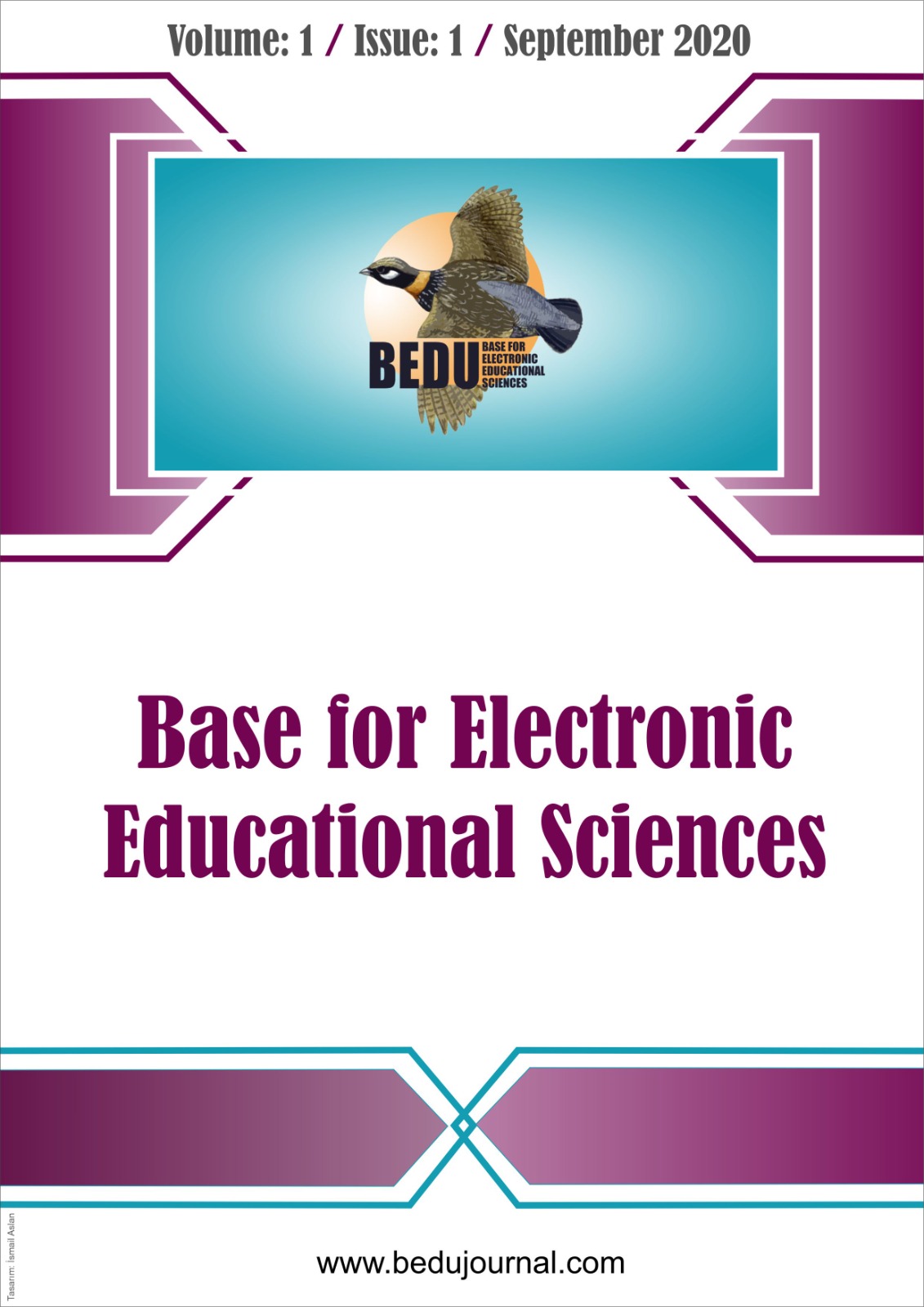Comparison of Speaking Activities in the Coursebooks New Hitit Turkish Language for Foreigners 1 and İstanbul Turkish A1 for for Foreigners
Turkish for foreigners, Speech activities, Comparison, Istanbul, New Hitit, Textbook.
Comparison of Speaking Activities in the Coursebooks New Hitit Turkish Language for Foreigners 1 and İstanbul Turkish A1 for for Foreigners
Turkish for foreigners, Speech activities, Comparison, Istanbul, New Hitit, Textbook.,
___
Akcan, S. (2014). Speaking education. D. Yaylı ve Y. Bayyurt. (Ed.) In Teaching Turkish to foreigners, policies, methods and skills (s. 202-210). Ankara: Anı Publishing.
Arı, G. (2018). Speaking education. M. Durmuş ve A. Okur (Ed.) In Turkish Teaching Handbook for Foreigners içinde (s. 277-293). Ankara: Grafiker Publishing.
Boylu, E. & Çangal, Ö. (2015). Turkish as a foreign language learner students in bosnia and herzegovina speaking anxiety investigation of different variables. International Journal of Turkish Literature Culture Education (TLCE), (4)1, 349-368.
Doğan, A. (1973). Lise öğrencilerinin İngilizce öğrenimlerini etkileyen yabancı dil kaygısı [Foreign language anxiety affecting high school students' English learning]. Dil Dergisi [Language Journal], 139, 48-67.
Durmuş, M. (2013). Yabancılara Türkçe öğretimi [Teaching Turkish to foreigners]. Ankara: Grafiker Publishing.
Göçer, A. (2009). Activities of developing vocabulary of students and dictionary usage in Turkish education. Turkish Studies, (4)4, 1025-1055. http://dx.doi.org/10.7827/TurkishStudies.1318
Göçer, A. (2015). Improvement of speaking skills in teaching Turkish as a foreign language. Trakya University Journal of Social Sciences, 17(2), 21-36.
Göçer, A. & Moğul, S. (2011). A general persrective on the studies in accordance with the teaching Turkish as a foreign language. Turkish Studies, (6)3, 797-810. http://dx.doi.org/10.7827/TurkishStudies.2470
Güneş, F. (2014). Turkish teaching approaches and models. Ankara: PegemA Publishing.
Güzel, A. & Barın, E. (2013). Teaching Turkish as a foreign language. Ankara: Akçağ Publishing.
Hattatioğlu, A. (2019). Comparison of foreign language teaching books for Turkish, English and German in terms of speaking activities. (Unpublished Master Thesis). Hacettepe University Institute of Educational Sciences, Ankara.
İşci, C. (2012). The evalaution of the effectiveness of the textbook Yeni Hitit used in teaching Turkish as a foreing language in terms of the four basic language skills and culture. (Unpublished Master Thesis). Dokuz Eylül University Institute of Educational Sciences, İzmir.
Köksal, D. & Pestil, D. (2014) Yabancı dil olarak Türkçe konuşma öğretimi içinde. A. Şahin (ed.) Yabancı dil olarak Türkçe öğretimi kuramlar, yaklaşımlar, etkinlikler (s. 295-316). Ankara: PegemA Publishing.
Kurudayıoğlu, M. (2003). Konuşma eğitimi ve konuşma becerisini geliştirmeye yönelik etklinlikler [Speech training and speaking skills activities for development]. Journal of Turkology Research, 13, 287-309.
Metin, M. (2015). Kuramdan uygulamaya eğitimde bilimsel araştırma yöntemleri [Scientific research methods in education from theory to practice]. Ankara: PegemA Publishing.
Oğuzkan, F. (2001). Çocuk edebiyatı [Children's literature]. Ankara: Anı Publishing.
Öz, F. M. (2011). Uygulamalı Türkçe öğretimi [Applied Turkish teaching]. Ankara: Anı Publishing.
Sallabaş, M.E. (2012). An evaluation of speaking anxiety for learners of Turkish as a foreign language. Turkish Studies, 7(3), 2119-2218. http://dx.doi.org/10.7827/TurkishStudies.3481
Sever, S. (2015). Türkçe öğretimi ve tam öğrenme [Turkish teaching and full learning]. Ankara: Anı Publishing.
Şen, Ü. & Boylu, E. (2015). Evaluation of speaking anxiety of iranian learners learning turkish as foreign language. Mustafa Kemal University Journal of Graduate School of Social Sciences, 12(30), 13-25.
Tanju, B. (2019). Suggested communicative speaking activities for A1 and A2 level classes in teaching Turkish as a foreign language. (Unpublished Master Thesis). İstanbul University Institute of Social Sciences, İstanbul.
Yılmaz, M. & Taşkaya, S. M. (2014). Yeni gelişmeler işığında Türkçe öğretimi [Teaching Turkish in the light of new developments]. Ankara: PegemA Publishing.
- ISSN: 2718-0107
- Yayın Aralığı: Yılda 4 Sayı
